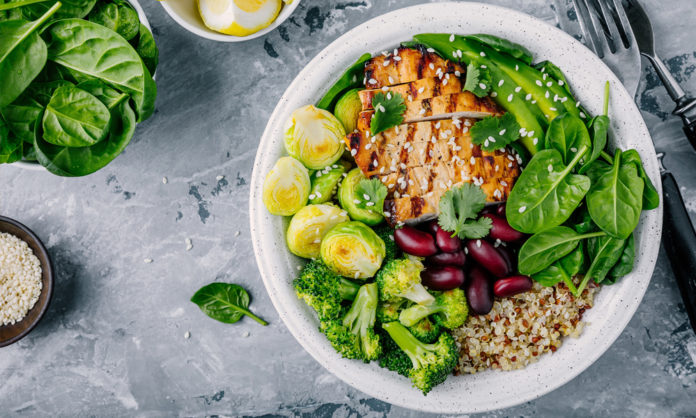The pandemic has wreaked havoc on countless aspects of our lives—including our waistlines. According to a recent survey conducted by the American Psychological Association, 61 percent of US adults admitted to gaining undesired weight—some as much as 29 pounds!—during COVID. And it makes total sense: We were all under a lot of stress, often drinking excessively and definitely making fewer veggie runs to the supermarket. Plus, with many of us working from home and the fridge just steps away from our desks…well, you get the picture.
So let’s say you’ve put on the “COVID 19.” How do you lose it and keep it off? We asked Latham-based certified dietitian and nutritionist Nan Windmueller to help you get back on the track to a healthy diet.
Coping Shouldn’t Equal Bingeing
Eating styles are coping mechanisms. People tend to binge not on celery, broccoli and lean meats but starches or sweets for very natural reasons. There’s a link between starches and sweets and the ability for the brain to have more serotonin available, which is our natural tranquilizer, sleep-inducer and mood-elevator. While eating certain foods to cope works on some level, it can also lead to health problems, beginning with weight gain, which can lead to Type 2 diabetes, heart disease and even cancer.
Eat Like You Live in a Blue Zone
Countries such as Japan and Italy have blue zones, where people are more likely to live into their 100s. They’re living with a relatively good quality of life, and they eat the way many cultures do that have reduced levels of obesity and heart disease. A key to blue zone longevity is not that these people have eliminated animal protein altogether.. It’s that they eat beans and legumes frequently: kidney beans, pinto beans, chickpeas, lentils and split peas. It’s a regular part of their diet, and it substitutes for meat.
Know the Great-Grandmother Rule
I often say to people, if your great-grandmother wouldn’t recognize what you’re eating, it’s probably not a good idea to eat it.
Eat Mindfully
People should know that a half cup of a starch, like rice or mashed potatoes or oatmeal or pasta, is about 80–100 calories. They should also know that a half-cup serving of fruit is about 50 calories. That might be a small apple or a peach or pear. They can eat an unlimited amount of vegetables as long as there’s no fat on them—no butter or oil. And people should know that a lean ounce of meat or low-fat cheese or poultry without skin has 55 calories in it. So it’s an awareness; it’s mindful eating.
Deprivation Dieting Is Not the Answer
I don’t like people to think about going on a deprivation diet, because they can’t wait to get off it once they’ve reached their goal. Then they go back to what they really want to be eating. Your weight-loss strategy has to reflect what you want to be eating for the rest of your life, which is why I individualize plans. I’m like a seamstress; I tailor them to each individual.
Consult a Doctor Before You Diet
When people call me, the first thing I do is screen them to make sure they’re under the care of a physician. Get your doctor involved; get a physical and all your blood tests done. Even if you still have lifestyle issues that need to be altered, once you’re pronounced healthy, I’d be happy to work with you.




